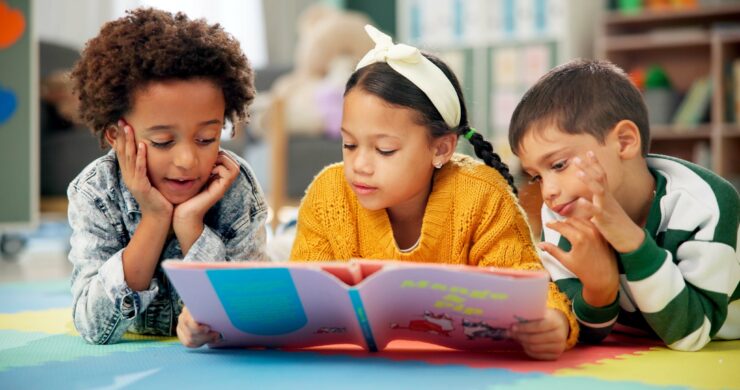What do books teach children about race and gender?
Text and images in influential children’s books present a distorted view of the population

Books teach children about the wider world and their place in it. They convey messages that can shape children’s beliefs about themselves and others. As a result, they help shape the adults children grow into.
My colleagues and I wondered how the texts and images in children’s books represent race and gender. What are kids seeing, and what are the likely impacts of what they see? There are so many books out there that it’s impossible for any one person or group of people to measure the messages in books one by one. We used new tools in computer science that bring together artificial intelligence and machine learning to learn about what’s inside over 1,000 of the world’s most influential children’s books.
“Books teach children about the wider world and their place in it.”
How do children’s books represent race and gender?
We started the project hoping to use existing tools from computer science to measure how race, gender, and age are represented in books. These tools are powerful; they are able to process large quantities of text and images and tell the user—very quickly and cheaply—what these texts and images contain.
Unfortunately, while the tools were able to help us measure both gender and race in texts, and gender in images, even the best ones available could not give us a satisfactory measure of how images represented people of different races.
This is a tricky problem: Classifications of race are socially constructed, so they vary from person to person and from setting to setting. To solve this problem, we created new tools to identify the facial skin tone of characters in the books. By adding this tool to existing ones, we were able to better understand the complicated concept of race and how it is presented to children.
My collaborator Emileigh Harrison explains, “Earlier studies measuring representation in children’s books focused solely on text, but images are potentially more powerful sites of social learning, especially for young readers.”
We applied these tools to over 1,000 children’s books that have won major literary awards over the past century. These books—including such classics as Madeleine’s Rescue, by Ludwig Bemelmans, and The Giver, by Lois Lowry—are commonly found in schools, libraries, and homes around the world. Many of the books primarily contain text, but others are primarily made of images, used to teach children both with and without the ability to read independently. The books are all externally recognized as important. As a result they are among the most influential and commonly read children’s books in the US and other English speaking countries.
“Inequality in representation has persisted throughout the last century and into the present.”
We found that inequality in representation has persisted throughout the last century and into the present. Our most striking finding is that white men were represented far more often than their population share would warrant, and all other groups were represented less often—in many cases much less often. This appears to be explained by both producer and consumer behavior, as we found when we linked data on book prices, purchases, and check-outs from libraries. Books that cater to what producers perceive to be the cultural status quo are both cheaper and purchased more frequently. On the consumer side, book purchases in the US reflect both the racial and the gender composition of the families who buy them (or check them out of libraries). And the racial composition of the books reflects the political beliefs of the local area, as consumers in more liberal areas read books with a more diverse range of characters.
Our powerful tools led to many other interesting and, at times, surprising findings. For example, children in the images had lighter skin than adults, even when both were of the same race. There is no biological reason for this difference, and we wondered if, perhaps, lighter skin tone was used to connote innocence or centrality to the plot.
There were also fewer women in the text than in the images, which may suggest that women are more often seen than heard. Their presence in the story sometimes seems to be merely visual rather than central to the plot.
We are just starting to apply these tools to other media. We plan to use them to look at newspapers, television, social media, and movies; there is a wide world of messages that parents, teachers, and policymakers would like to know more about. We are investigating not just whether different groups are represented in stories, but also how. Our larger goal is to understand more fully what children—and adults—see in the world, what they learn from what they see, and what that means for our society.
Footnotes
This research by team members in the Messages, Identity, and Inclusion in Education (MiiE) lab at the University of Chicago was summarized in a paper published in The Quarterly Journal of Economics.
